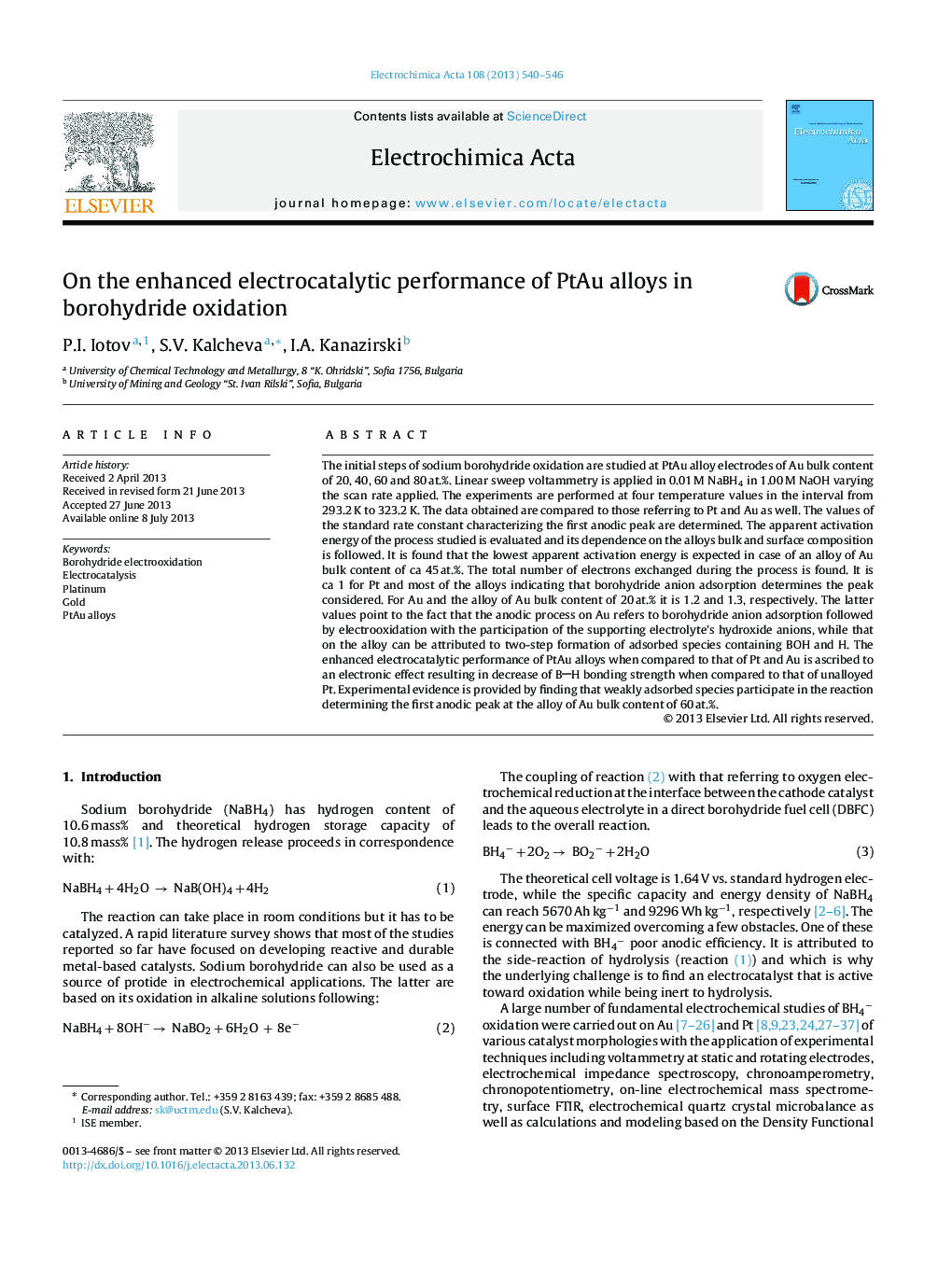| Article ID | Journal | Published Year | Pages | File Type |
|---|---|---|---|---|
| 186836 | Electrochimica Acta | 2013 | 7 Pages |
The initial steps of sodium borohydride oxidation are studied at PtAu alloy electrodes of Au bulk content of 20, 40, 60 and 80 at.%. Linear sweep voltammetry is applied in 0.01 M NaBH4 in 1.00 M NaOH varying the scan rate applied. The experiments are performed at four temperature values in the interval from 293.2 K to 323.2 K. The data obtained are compared to those referring to Pt and Au as well. The values of the standard rate constant characterizing the first anodic peak are determined. The apparent activation energy of the process studied is evaluated and its dependence on the alloys bulk and surface composition is followed. It is found that the lowest apparent activation energy is expected in case of an alloy of Au bulk content of ca 45 at.%. The total number of electrons exchanged during the process is found. It is ca 1 for Pt and most of the alloys indicating that borohydride anion adsorption determines the peak considered. For Au and the alloy of Au bulk content of 20 at.% it is 1.2 and 1.3, respectively. The latter values point to the fact that the anodic process on Au refers to borohydride anion adsorption followed by electrooxidation with the participation of the supporting electrolyte's hydroxide anions, while that on the alloy can be attributed to two-step formation of adsorbed species containing BOH and H. The enhanced electrocatalytic performance of PtAu alloys when compared to that of Pt and Au is ascribed to an electronic effect resulting in decrease of BH bonding strength when compared to that of unalloyed Pt. Experimental evidence is provided by finding that weakly adsorbed species participate in the reaction determining the first anodic peak at the alloy of Au bulk content of 60 at.%.
